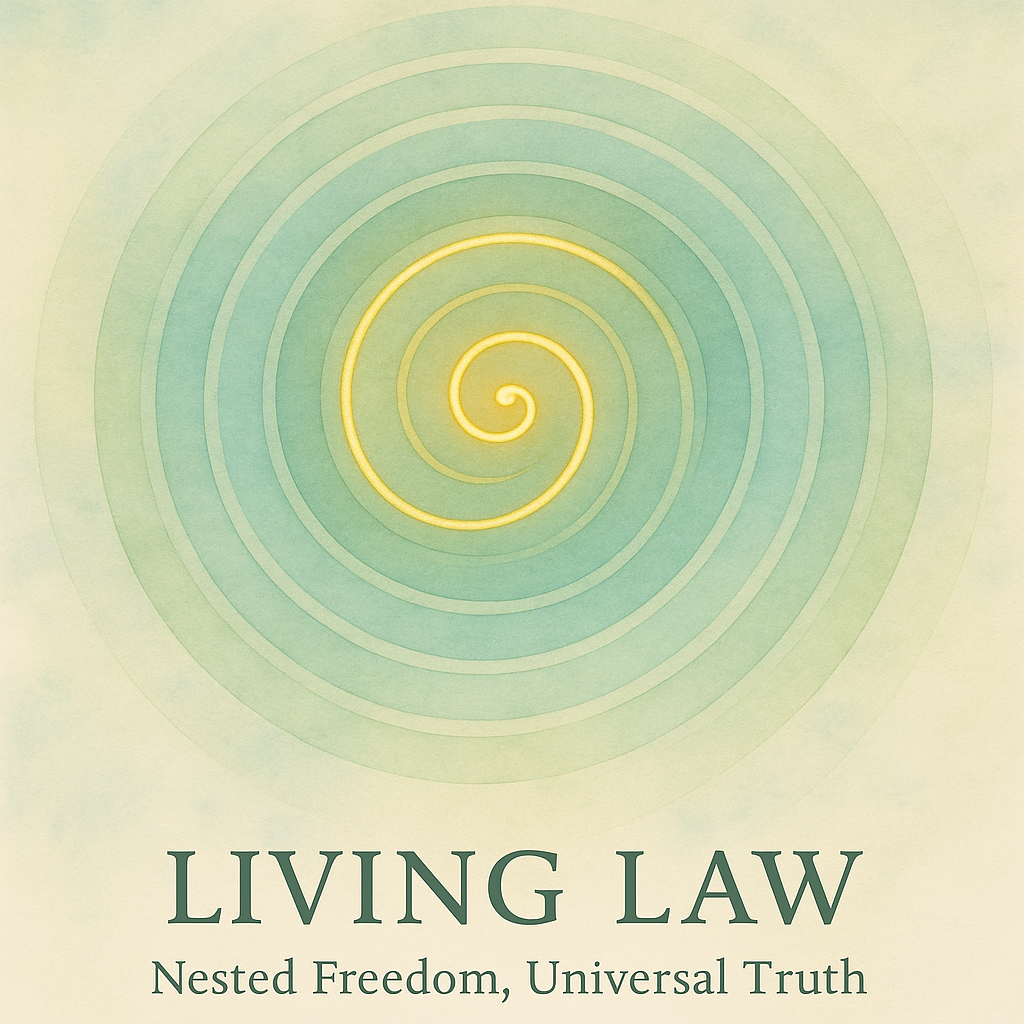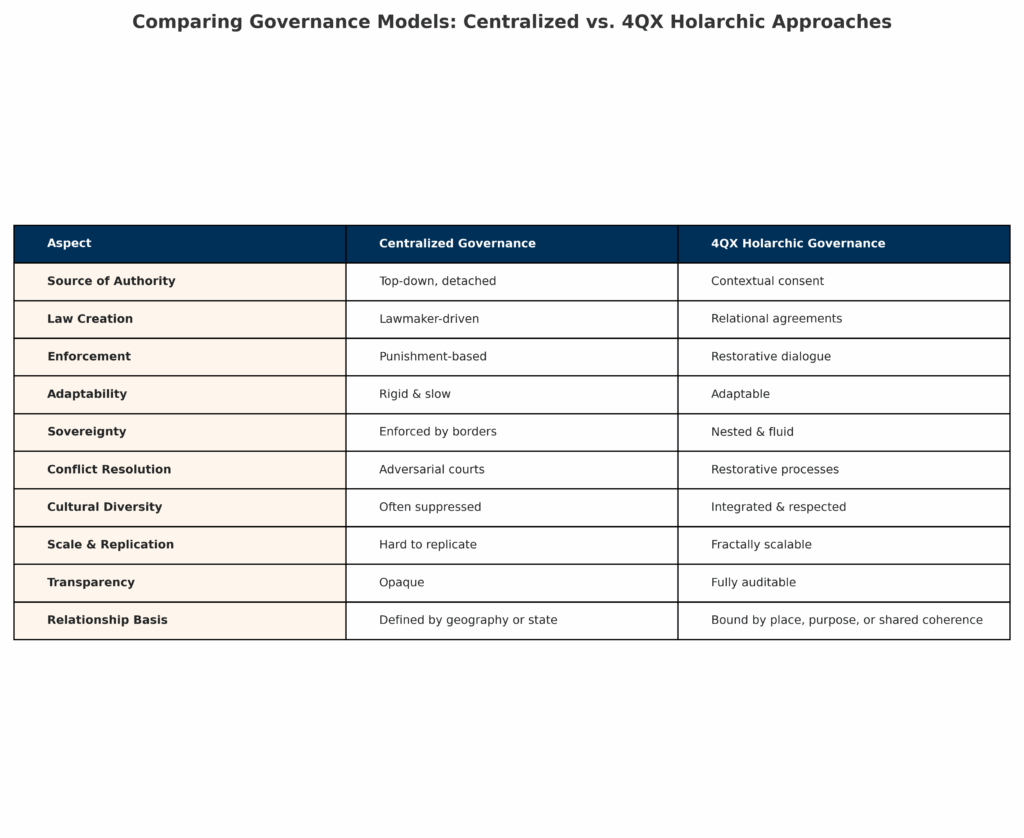
Pretext: Global systems are collapsing under their own weight — too centralized, too abstract, too disconnected from the realities they claim to govern. Communities around the world are waking up to the limits of representative democracy and the harm caused by one-size-fits-all legislation written far from the places they impact. As ecological, social, and economic breakdowns deepen, the need for a more grounded, adaptable form of governance becomes urgent.
But what if law could grow like a forest? What if sovereignty could emerge from relationship, logic, and care — not coercion? This is how 4QX holons form territories and pass legitimate laws — not through force or decree, but through coherence.
The Universal Telos: A foundation for living governance
The 4QX model is not just a technical blueprint for self-organizing systems — it mirrors the deeper structure of life itself.
At its core lies the Universal Telos:
The drive toward coherence, generativity, and harmony within and between beings.
This telos — a directional tendency inherent in existence — is what guides natural systems toward flourishing without centralized control. Forests, watersheds, coral reefs, and even human communities, when uncoerced, tend to organize toward diversity, mutual support, and regeneration.
A 4QX holarchy does not impose order from above.
It listens to the Universal Telos — growing law, governance, and sovereignty in alignment with life’s own logic.
This is why it favors:
- Relationship over domination,
- Restoration over punishment,
- Context over abstraction.
In the absence of imposed control, holons are free to pursue coherence, adapting to place, purpose, and shared meaning — honoring the same principles that govern thriving ecosystems across time.
How a cluster of 4QX holons forms a territory
A holon in 4QX begins as a self-aware unit with context. When several holons:
- Share a bioregion (a watershed, valley, village, etc.),
- Share core intentions (e.g., water stewardship, regenerative food systems, cultural preservation), and
- Relate actively to one another,
they form a territorial holarchy: a larger holon composed of nested, interdependent parts. This territory isn’t claimed by power but recognized through stewardship and relational coherence.
Consent as the foundation of law
In a 4QX holarchy:
- Laws emerge as formalized relational agreements.
- Every law is:
- Contextual (rooted in land and relationship),
- Auditable (traceable to its logic tree),
- Consent-based (ratified by those affected).
Example: “We, the land stewards of this ridge, agree that no tree over 30 years old shall be cut without shared review.”
These are not arbitrary rules, but expressions of living agreements.
How holons propose and ratify new laws
- Proposal: A holon suggests a new law.
- Review: Others test the proposal against their logic, needs, and ecological feedback.
- Refinement: The proposal is refined through dialogue.
- Ratification: Once coherent, it becomes a shared pattern in the local logic graph.
No majority votes, no top-down enforcement. Just alignment.
Enforcement through relationship
Incoherence — not disobedience — triggers review.
- Holons inquire, not punish: “Why is this out of sync?”
- The system favors restoration: reflection, dialogue, and reweaving trust.
- Guardians may emerge: roles for boundary-setting and system protection, accountable to the whole.
Plurality within the whole
- Dissent is honored. Forks are allowed.
- A holon can operate with different norms as long as it remains coherent with others.
- Multiple legal subcultures can coexist in the same territory under shared meta-principles: care, regeneration, consent.
Evolving law with the land
As contexts change, so do laws. Holons:
- Log lived experience,
- Adjust relational logic,
- Maintain law as a living organism, not a static script.
Laws are not sacred because they were written. They are sacred when they maintain relationship.
Nested sovereignty, not nations
Different territories can:
- Recognize each other’s sovereign patterns,
- Share protocols for trade, migration, water, and knowledge,
- Use diplomatic holons to carry coherence between regions.
No nations. No states. Just nested, relational governance upheld by consent and logic.
Graphic: Centralized vs. 4QX holarchic governance comparison

Conclusion: Law as a living system
A 4QX holarchy doesn’t enforce order — it grows coherence. Local laws emerge from shared needs and patterns. Sovereignty arises not from power but from care. This is law as commons, as conversation, as code. A world where every place can be governed by those who love it most.
